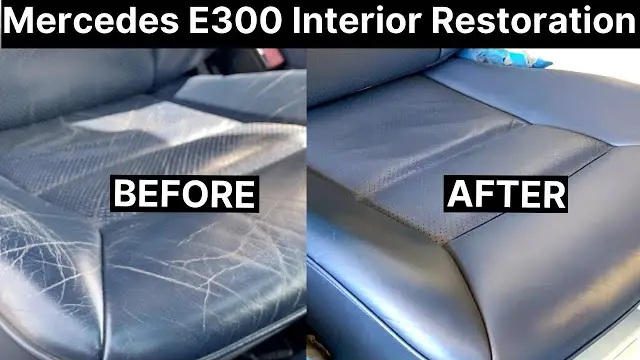
Apply diluted liquid leather with a sponge to worn areas. Dilute the liquid leather with water by 30% before rubbing it into cracks and creases. Wipe off the seat with a damp cloth so that the product is removed from the good leather and left in the cracks.
Can you fix cracked car leather?
If the leather is crackedOpens a new window, it can be fixed with a car leather repair or leather patch kit. This type of kit is inexpensive. Make sure it includes a leather dye that matches the color of the leather car interior. Start by cleaning the seat with warm water that is mixed with mild dish soap.
Why do leather seats crack?
1. Body oil and dirt can cause leather to crack – It is very easy for dirt and oils to collect on the surface of leather. Together, these act like a fine sand paper, breaking down the protective layer on fully finished leather over time, eventually leading to visible cracks at the surface.
Can you condition cracked leather?
Light surface cracks or scratches in your leather can be treated and hidden easily by applying a good leather conditioner. If the cracks are deeper, you may need to take further and more complicated steps. Leather crack filler, coloring and nourishing techniques can be used to hide deep cracks.
Does mink oil fix cracked leather?
Smoothe it. You can apply a cracked leather repair compound for this step, but we recommend dabbing the cracking areas with mink oil or neatsfoot oil. Use gentle pressure to smooth the oil into and over the cracks. A cloth or even the back of a spoon works well for this.
Does genuine leather crack?
Authentic leather is made of animal hide, which naturally needs to be maintained and moisturized to keep it elastic and durable. Even so, leather of a poor quality tends to easily become dry, crack, and unfortunately peel.
What makes vinyl seats crack?
Vinyl is really nothing more than plastic (specifically polyvinyl chloride). Special plasticizers are added to make the PVC flexible and suitable for use on furniture. A clear topcoat seals the vinyl to keep the plasticizers in place. When this topcoat wears away or is damaged, the vinyl can crack.
What causes vinyl to crack?
Peeling and cracking of vinyl surfaces generally occurs when the adhesive at the edge of the material begins to lose its ability to bond the materials together. As a result, the edge of the vinyl will begin to curl upwards, not only creating an unpleasant aesthetic but allowing dirt to collect beneath the flooring.

